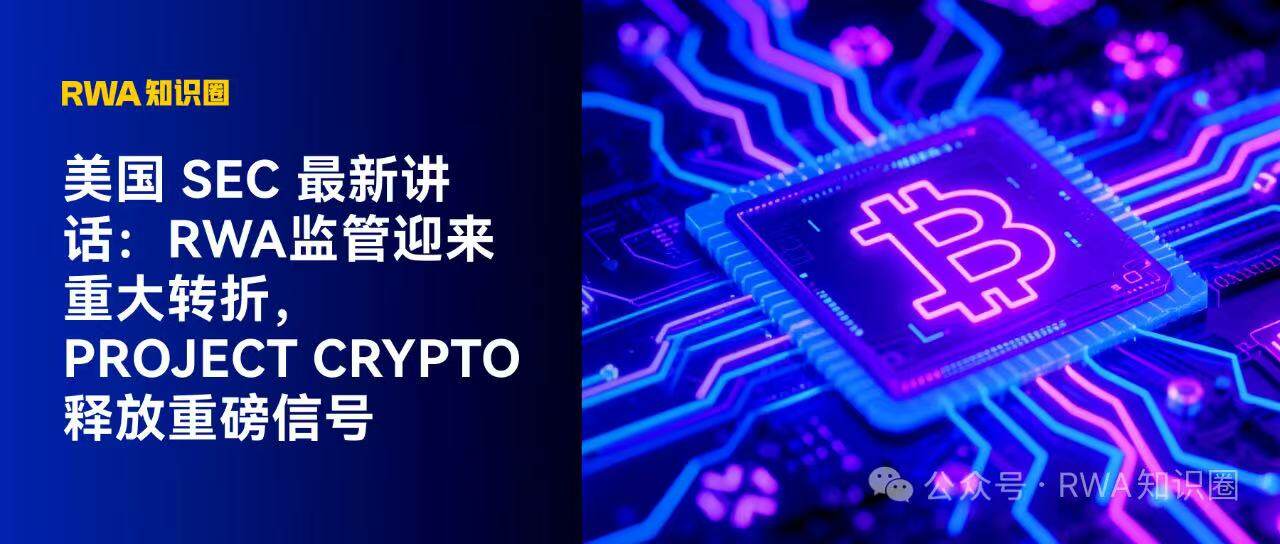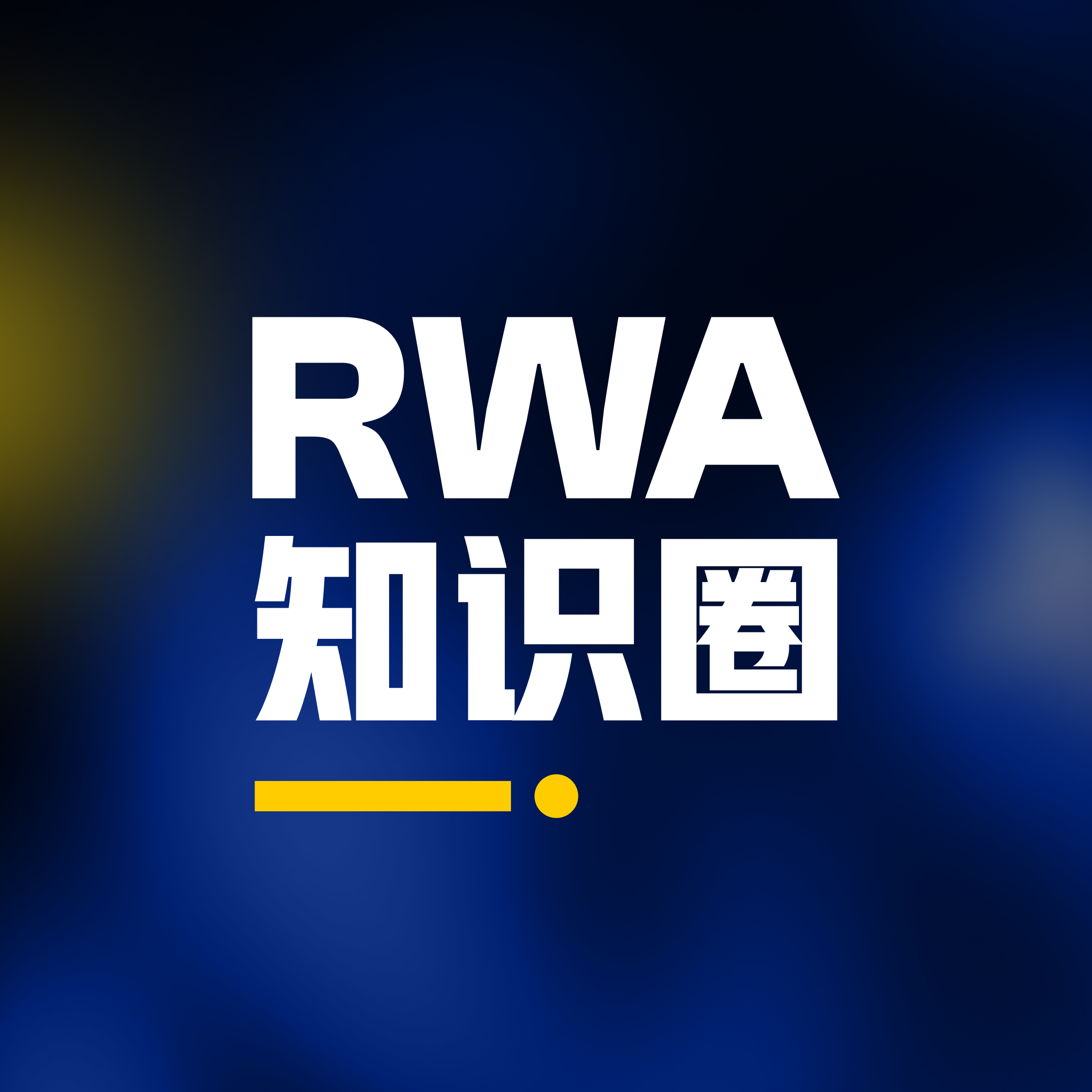Latest statement from the US SEC: RWA regulation faces a major turning point; Project Crypto releases significant signals.
introduction:
Recently, the Chairman of the U.S. Securities and Exchange Commission (SEC) delivered a new speech, providing the clearest statement to date on the regulatory boundaries of crypto assets, token classification, and future regulatory path under the "Project Crypto" framework.
In particular, the classification of RWA-related tokens, whether they are securities, and how they will be issued in the future have been substantively answered for the first time.
The importance of this speech lies in:
For the first time, it showed the industry that RWA had clear regulatory categories, clear exemption logic, and a compliance path to follow.
I. SEC Makes Rare Relaxation: Most Cryptocurrencies Are Not Securities, and RWA Receives Clear Classification
The SEC chairman unusually stated explicitly:
"Most tokens traded today are not securities in themselves."
Tokens and investment contracts should be treated separately and no longer considered the same.
More importantly, this logic also applies to RWA:
Most RWA products (such as tokenized bonds, tokenized notes, and tokenized asset certificates) no longer automatically fall under the definition of securities under the new classification criteria.
In the past few years, the enforcement logic that "anything involving financing is a securities transaction" has kept RWA under the shadow of regulation.
Today, "utility tokens, governance tokens, network tokens, and asset certificate tokens" have all seen the real path of "de-securitization".
This has very direct implications for RWA:
- It can be released within a clearer framework.
- It will not be permanently regarded as a security due to historical financing or on-chain circulation.
- Capable of becoming an institutionally recognized on-chain financial asset
In short, RWA has moved from a gray area to an era of "clear categories and compliant implementation".
Second, Project Crypto's core strength lies in its clear categorization: RWA is largely classified as "non-security tokens".
According to the speech, the four types of tokens proposed in the new framework are the "new infrastructure" for regulation:
- Digital Commodities
- Digital Utilities
- Digital Collectibles
- Tokenized Securities
Among them, the first and second categories are highly compatible with the current mainstream RWA assets.
- RWA, primarily based on "on-chain proof of ownership" and "on-chain debt certificates," belongs to the category of digital tools.
- RWA, which focuses on "on-chain clearing, settlement, and profit distribution," is classified as a digital good.
This means:
Under this set of rules, the vast majority of RWAs will no longer be classified as securities.
Only those tokenized forms that are essentially traditional securities (such as fund units, stocks, and bonds) fall under the fourth category of "tokenized securities" and are subject to explicit SEC regulation.
This also led to a consensus across the industry for the first time:
RWA is not equivalent to a security, but can be categorized into a more appropriate class based on the nature of the asset.
III. Regulatory Boundaries Clarified for the First Time: RWA No Longer Subjected to "One-Size-Fits-All" Jurisdiction by the SEC
The speech clearly pointed out:
Non-security tokens fall under the jurisdiction of the CFTC or state regulatory bodies, not the SEC.
The SEC no longer considers all on-chain assets as securities.
This is especially important for RWA:
The biggest obstacle in the past was "uncertainty," but now it is "clear classification + tiered regulation."
The results of RWA are:
- Most asset-based RWAs will operate under the supervision of the CFTC or at the state level.
- Tokenized government bonds and funds fall within the SEC's securities framework, with a clear and predictable path.
- The issuance, custody, and trading of RWA will all be subject to compliance boundaries.
It can be said that this was the first time the United States had formally recognized:
RWA is an on-chain mapping of multiple asset types and should be categorized accordingly, rather than simply classified as a security.
This has significantly alleviated the industry's pain point of "not being able to see the regulation clearly".
IV. Global Impact: RWA, stablecoins, and public blockchain ecosystems will all benefit from this.
The shift in US regulatory direction will not only affect the domestic market but will also have a ripple effect on the global crypto industry, particularly:
01 RWA's compliance environment is becoming clearer
The path to tokenized securities (such as government bond funds, bill products, and MMFs) is solid, and the regulatory positioning is clear, which is crucial for the long-term implementation of RWA.
02 The "normal use" of utility tokens is recognized.
Payment tokens, network tokens, and on-chain tools no longer naturally fall under the securities framework, which is conducive to the growth of real-world use cases.
03. Transactions and infrastructure will usher in a new round of expansion opportunities.
CEXs, DEXs, wallets, and public chains can all develop under clearer rules, raising the industry's "invisible regulatory ceiling."
To put it bluntly:
The United States is transforming the crypto industry from one of “uncertain regulatory risks” to one that is “regulated, compliant, and sustainable.”
V. Conclusion: RWA will be a "must-learn" course for understanding the crypto industry in the coming years.
As US regulators begin to clearly categorize, open up pathways, and acknowledge asset differences, the entire industry will shift from "speculative-driven" to "asset-driven."
Whether it's tokenized securities, on-chain settlement, stablecoin payments, or institutional-level asset migration, all will be accelerated in this round of policy changes.
therefore:
In the next 3-5 years, the real industrial value will come from RWA – from on-chain assets with real assets, real cash flow, and real regulatory logic.
If you want to gain a first-mover advantage in industry changes
Learning RWA will be the most important cognitive investment.
- 核心观点:美国SEC明确RWA代币监管分类。
- 关键要素:
- 多数RWA代币不再自动视为证券。
- 建立四类代币监管框架分类标准。
- 非证券RWA归CFTC或州监管。
- 市场影响:推动RWA合规发展,降低监管不确定性。
- 时效性标注:长期影响




